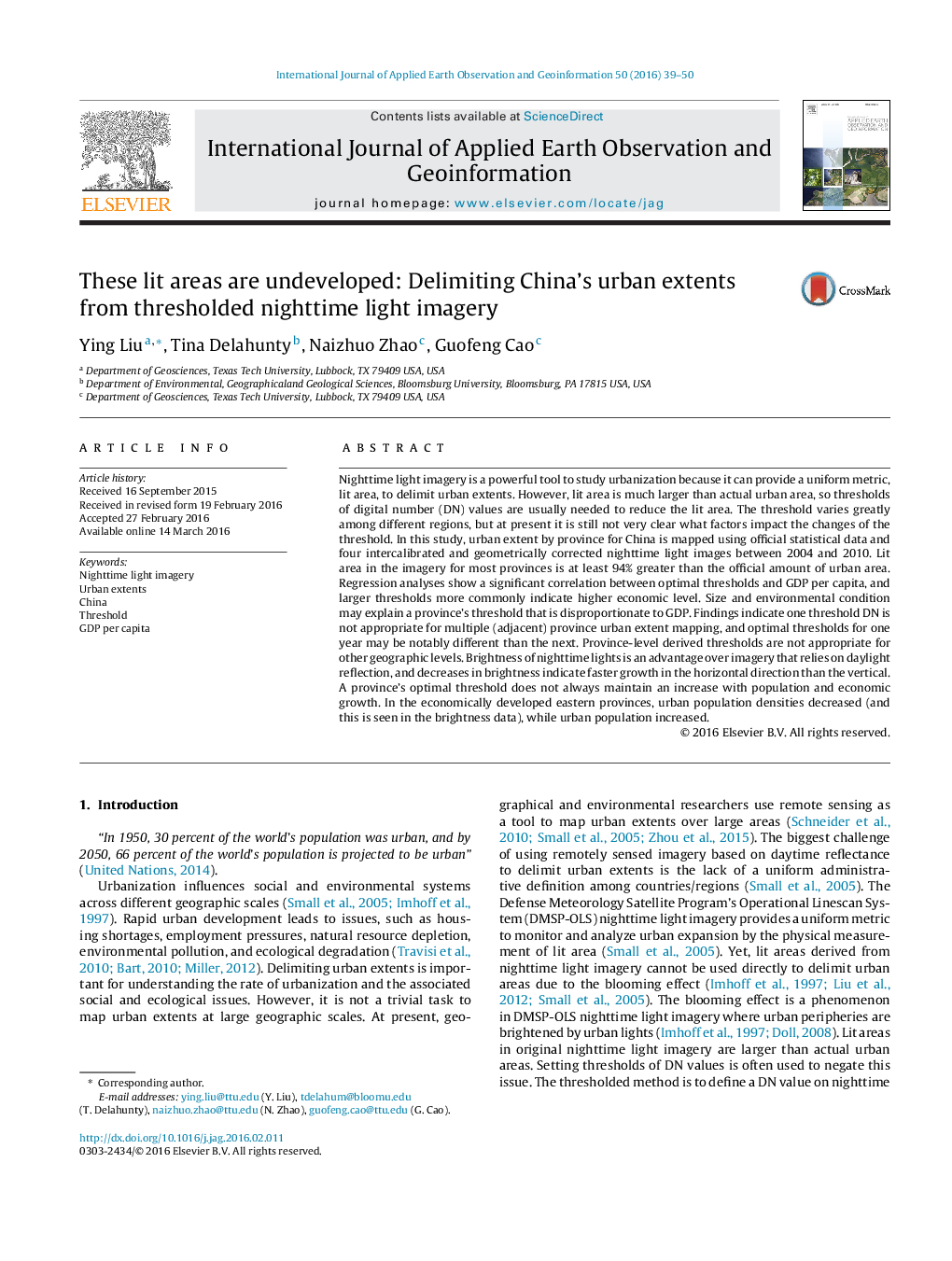| کد مقاله | کد نشریه | سال انتشار | مقاله انگلیسی | نسخه تمام متن |
|---|---|---|---|---|
| 4464580 | 1621807 | 2016 | 12 صفحه PDF | دانلود رایگان |
• Optimal thresholds were proposed for extracting urban areas from nighttime imagery.
• The optimal threshold value correlates to the GDP per capita at the province level.
• The optimal threshold value is of fluctuant changes across different years.
• Farmland rather than built-up land is the major land cover type in the lit areas.
• In most provinces urban population increased but urban population densities decreased.
Nighttime light imagery is a powerful tool to study urbanization because it can provide a uniform metric, lit area, to delimit urban extents. However, lit area is much larger than actual urban area, so thresholds of digital number (DN) values are usually needed to reduce the lit area. The threshold varies greatly among different regions, but at present it is still not very clear what factors impact the changes of the threshold. In this study, urban extent by province for China is mapped using official statistical data and four intercalibrated and geometrically corrected nighttime light images between 2004 and 2010. Lit area in the imagery for most provinces is at least 94% greater than the official amount of urban area. Regression analyses show a significant correlation between optimal thresholds and GDP per capita, and larger thresholds more commonly indicate higher economic level. Size and environmental condition may explain a province’s threshold that is disproportionate to GDP. Findings indicate one threshold DN is not appropriate for multiple (adjacent) province urban extent mapping, and optimal thresholds for one year may be notably different than the next. Province-level derived thresholds are not appropriate for other geographic levels. Brightness of nighttime lights is an advantage over imagery that relies on daylight reflection, and decreases in brightness indicate faster growth in the horizontal direction than the vertical. A province’s optimal threshold does not always maintain an increase with population and economic growth. In the economically developed eastern provinces, urban population densities decreased (and this is seen in the brightness data), while urban population increased.
Journal: International Journal of Applied Earth Observation and Geoinformation - Volume 50, August 2016, Pages 39–50
